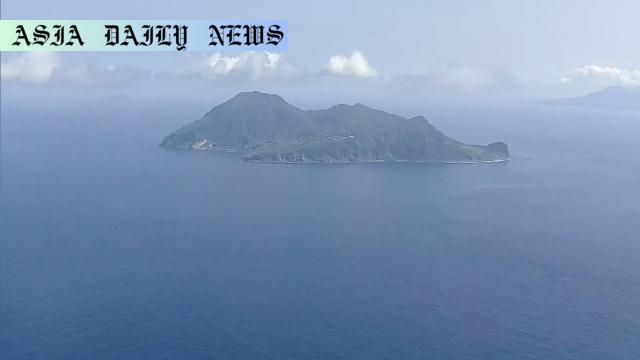Earthquakes: Over 2,200 tremors have struck Japan’s Tokara Islands since June 21, with seismic activity far exceeding previous years.
Earthquakes have shaken the Tokara Islands 2,193 times since June 21.
A quake of intensity lower 6 was recorded in Akusekijima on July 3.
Recent activity far exceeds tremors recorded in previous years.
Residents are advised to stay vigilant after significant tremors.

Escalating Seismic Activity Around Tokara Islands
The serene Tokara Islands, part of Japan’s Kagoshima Prefecture, are currently at the center of an extraordinary seismic event. Since June 21, a whopping 2,193 earthquakes have been recorded in the vicinity of the islands, a figure far dwarfing the seismic activity previously experienced in 2021 and 2023 combined. The Japan Meteorological Agency has highlighted the unparalleled magnitude of these occurrences, with tremors strong enough to be felt by humans being particularly alarming. From Akusekijima to Kodakarajima, every corner of this island chain has been touched by the rumbling earth beneath.
July witnessed some of the strongest quakes, beginning with a lower 6 quake hitting Akusekijima Island on July 3, followed by two upper 5 tremors on July 6 and, a day later, lower 5 intensity shaking the same region. The intensifying pattern of these quakes is a stark reminder of nature’s unpredictability and serves as cause for both scientific intrigue and concern. Local authorities and residents brace themselves for possible further quakes, with experts urging vigilance against additional strong tremors that cut beyond lower 6 on Japan’s seismic intensity scale.
Analyzing the Surge in Tremors
The sudden unrelenting surge in seismic activity invites questions. Is it part of a natural cycle, or does it mark the approach of a larger tectonic shift? The Tokara Islands are located in a seismically active region due to the interaction of tectonic plates, including the Pacific and Eurasian plates. Scientists are keeping a watchful eye on this area, trying to decode what might be causing such widespread ground movements. Data compiled from previous years indicate these recent tremors overshadow earlier seismic records by a long shot. Unlike smaller, everyday tremors that often go unnoticed, these jolts have caused alarm due to their frequency and strength, shaking people’s confidence and livelihoods.
The prognosis is layered in uncertainty and caution. Experts believe multiple parameters, including submarine volcanic activity and the movement of fault lines deep under the sea, might be contributing to this upsurge. A comprehensive study is crucial not just for understanding earthquake patterns, but also for safeguarding lives and infrastructure in such vulnerable regions. As new tremor records are registered each day, it is vital for local governments to remain proactive in implementing safety measures and for residents to stay prepared for emergencies.
Preparedness: A Shared Responsibility
In high-risk seismic zones like the Tokara Islands, the focus is not only on understanding geophysical phenomena but also on implementing strong disaster mitigation frameworks. The Meteorological Agency’s warnings, advising residents to stay vigilant, underscore the importance of readiness. Emergency drills, infrastructure reinforcement, and dissemination of survival guidance are key approaches to bringing peace of mind in otherwise uncertain times.
Communities have been learning to adapt to these situations, yet the unrelenting nature of the tremors has left many shaken—both emotionally and socio-economically. Tourism, a mainstay for such islands, has taken a hit, as visitors stay away in fear of escalated risks. The memory of past disasters, such as the catastrophic Tohoku earthquake in 2011, still resonates across Japan, making it imperative to be prepared for worst-case scenarios. Efforts must combine local action and national resources for the best possible outcomes. Collaboration between scientists, government agencies, and local communities can create robust systems that protect not just lives but also property and livelihood.



Commentary
The Grim Reality of Unpredictable Nature
The unfolding seismic crisis in the Tokara Islands narrates a compelling story about the volatile and unpredictable nature of our planet. With over 2,200 earthquakes shaking the region since June 21, the islands sit at the crossroads of tectonic uncertainty and human vulnerability. The frequency and magnitude of these tremors, surpassing historical records, underscore an urgent need for monitoring and preparedness in seismic hotspots. It’s a chilling reminder of how minuscule human control becomes when the Earth flexes its geological might. Such phenomena not only affect lives, but they also disrupt critical local economies dependent on tourism and fishing. The quake-hit Tokara Islands must now navigate not only physical instability but also economic and emotional turmoil stemming from this crisis.
The Need for Vigilance and Collaboration
What stands out as commendable in this tragic scenario is the real-time vigilance by Japan’s Meteorological Agency, continuously updating on seismic risks while urging proactive caution among residents. In places where natural disasters are no strangers, preparedness is often equated with survival, making such warnings critical. However, even with advanced monitoring systems in place, the question arises: Are we doing enough to predict these disasters? The complexity of tectonic movements makes it a challenge, yet every small step in scientific advancement plays a monumental role in potentially saving millions of lives over time.
An Opportunity to Advance Research
From an optimistic perspective, episodes like this give the global scientific community an opportunity to deepen its understanding of seismic phenomena, especially when such a significant cluster of events emerges in a short span. This is not merely a regional concern but an international prompt to refine disaster readiness and prediction systems globally. The learnings from Tokara Islands can inform protocols, mitigate risks, and bolster infrastructure resilience worldwide. While the tremors literally shake the earth beneath our feet, figuratively they remind us of humanity’s responsibility toward environmental stewardship and collective safety for future generations.